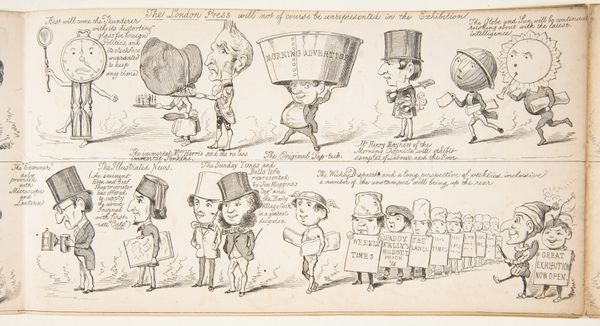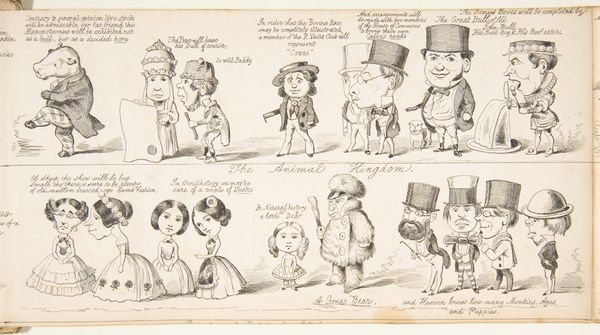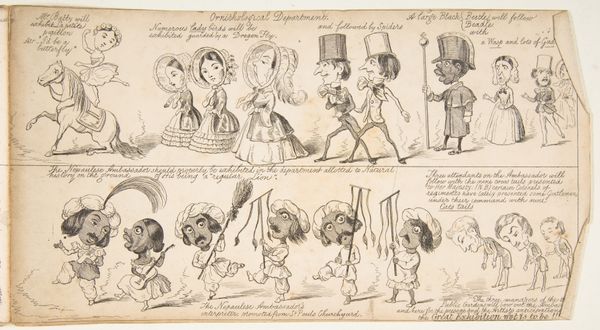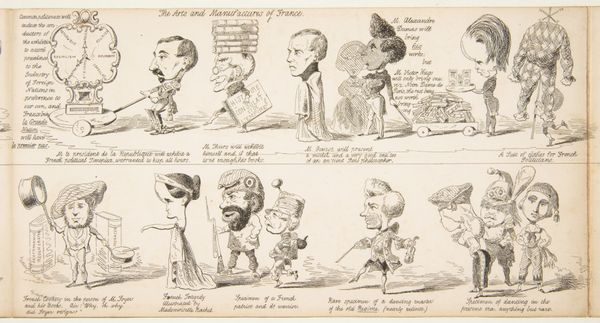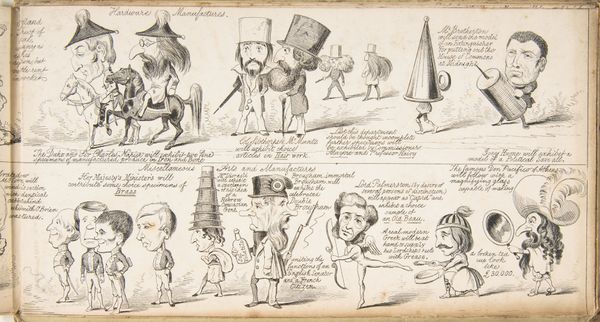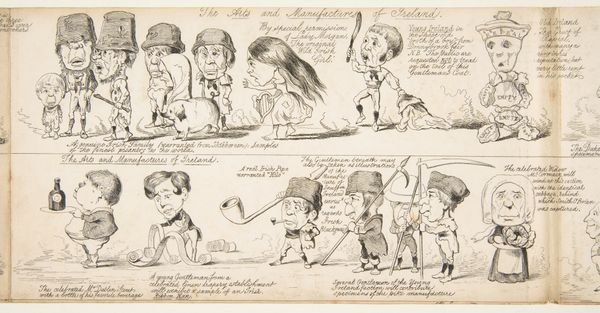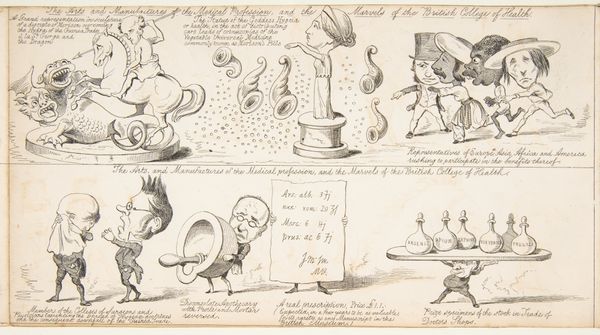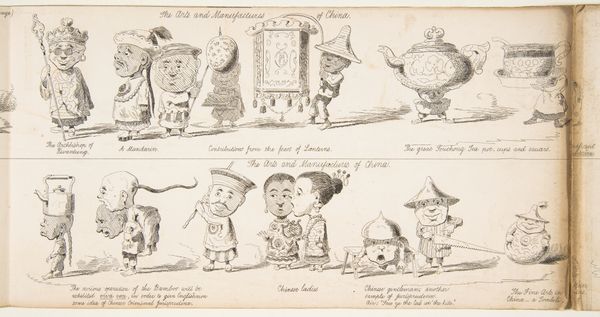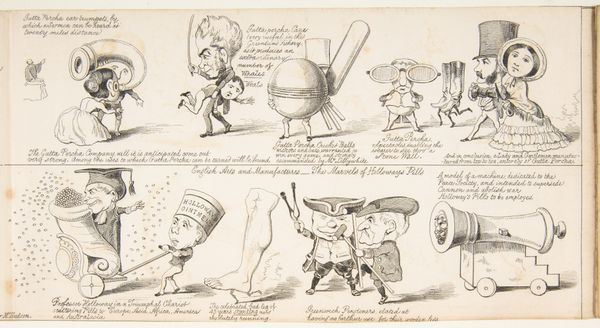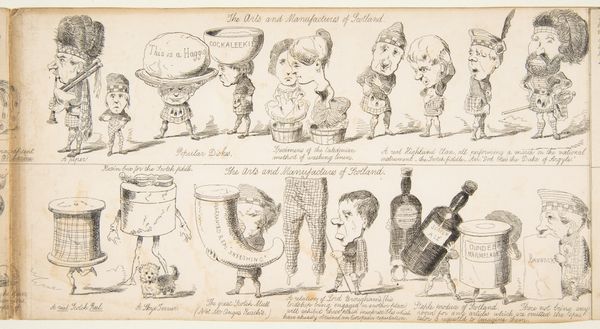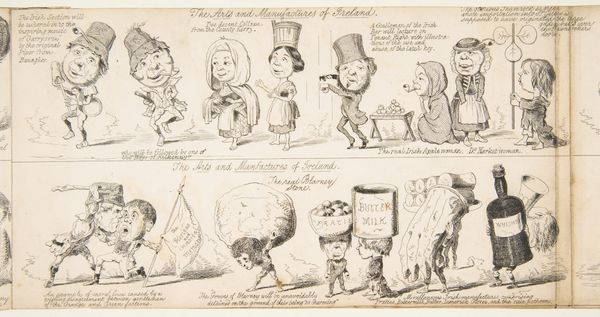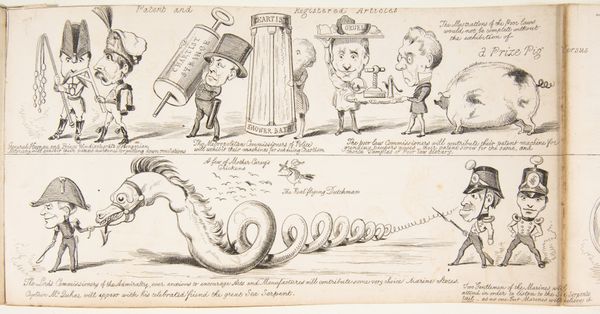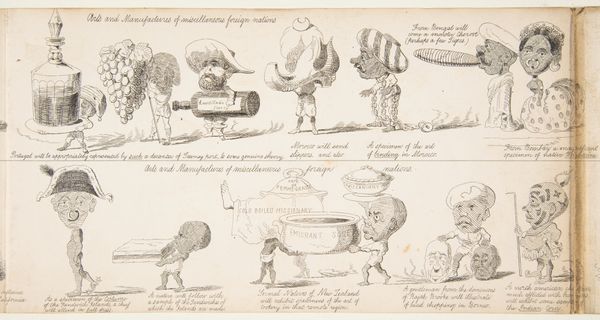
The Great Exhibition "Wot is to Be", Probable Results of The Industry of All Nations in The Year '51, Showing What is to be Exhibited, Who is To Exhibit, in Short How Its All Going to Be Done 1850
0:00
0:00
drawing, print, pen
#
drawing
#
narrative-art
# print
#
pen sketch
#
caricature
#
pen
#
history-painting
#
modernism
Dimensions: sheet: 5 1/16 x 9 5/16 in. (12.8 x 23.7 cm)
Copyright: Public Domain
This sheet, made around 1851 by George Augustus Sala, satirizes the Great Exhibition, using potent visual symbols of industry and society. Here, look at how burdens are depicted: Individuals struggle under the weight of 'chalk' and 'treacle,' their exaggerated forms echoing classical Atlas figures bearing the world. This motif transcends epochs, appearing in ancient Greek sculptures and Renaissance paintings, each time reflecting societal burdens and the human condition. Note the 'arsenic' being carried. Historically, arsenic has been associated with poison and the subtle dangers lurking beneath the surface. Consider how such motifs resonate subconsciously. The act of carrying—whether burdens or concealed threats—taps into our collective memory, stirring primal fears and anxieties about survival and unseen dangers. Sala ingeniously evokes these deep-seated emotions, using familiar symbols to critique the aspirations and anxieties of his time. See how this symbol has evolved—from the divine Atlas to the workers here, demonstrating an almost cyclical cultural progression.
Comments
No comments
Be the first to comment and join the conversation on the ultimate creative platform.
